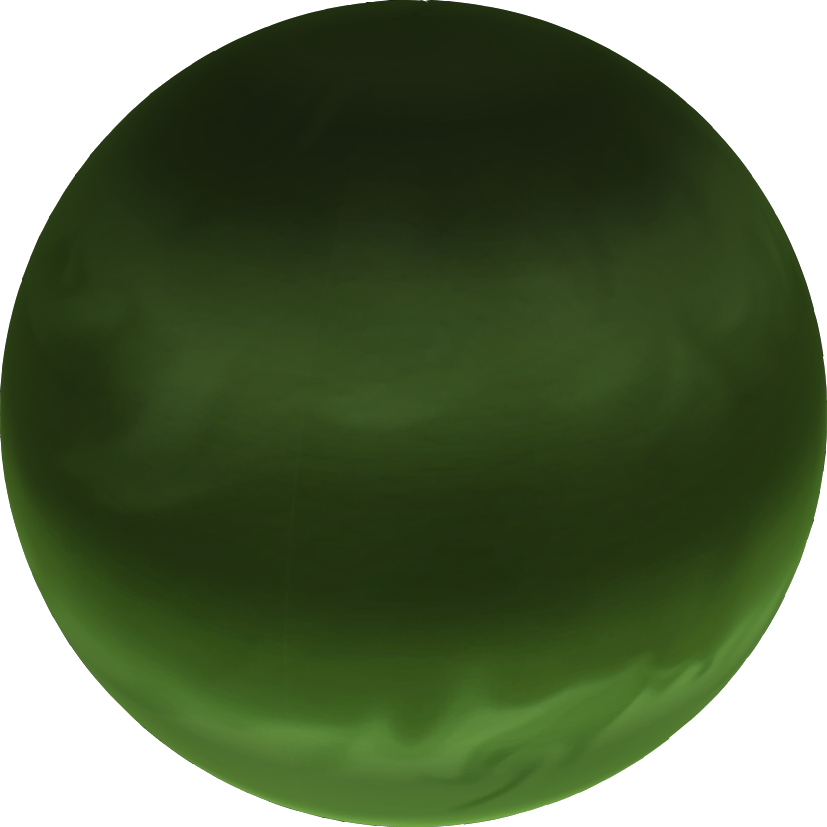Jool
Jool is a gas giant and the sixth planet of the Kerbol star system. It is the Jupiter analog for Kerbal Space Program. Aside from Kerbol, Jool has the largest diameter and greatest mass of all celestial bodies. While its distance from Kerbin makes it difficult to reach, it is one of the most appealing targets for missions due to its large and complex system of five moons: Laythe, Vall, Tylo, Bop, and Pol.
In-game Description
Jool is particularly known for being a rather large, predominantly green planet. Kerbalkind has longed to visit it since it was first spotted in the sky. Philosophers reason that the swirling green planet must be a really nice place to visit, on account of its wholesome coloration. If you look at Jool through a telescope, it is fuzzy.
Atmosphere
Although Jool has a radius ten times greater than Kerbin, its atmosphere begins just twice as high (138.2 km). It is extremely dense, well suited for aerobraking from a high-speed interplanetary intercept. Orbiting just outside the atmosphere will give a period of 94.74 minutes, and an orbital speed of 6,785 m/s. Typically an altitude lower than 100 km is not needed for aerobraking, and it may be wise to stay in the upper atmosphere because a bug can occur causing the ship to spontaneously explode or glitch out Kerbals on EVA. Closer to the surface, the physics of the game start to break down. Due to its extremely thick atmosphere, terminal speed is so low that lighter spacecraft will not even need parachutes or retrorockets. It is possible to land on its solid surface, though spacecraft are inevitably and invariably devoured by the Kraken. If the craft is very small, it may survive the Kraken, but the parts will explode once they are 100m below the surface. The message "... collided with Cloud" will be displayed in the mission summary. The game may glitch out and corrupt the save. If a kerbonaut is put on EVA, he will not be destroyed, making one-way sacrificial landings possible. However, as seen near the end of this video, the kerbonaut will start to glitch out and shake uncontrollably. This only happens on 4× time warp. The game will later glitch and the Hell Kraken will strike. Unless you restart the game, Kerbin's atmosphere will be missing. This glitch, while most common on Jool, is not unique to Jool, and can even be experienced on Kerbin in extreme situations; for example, going on EVA from a high speed spaceplane as it takes off can occasionally cause this, or it can even, although much more rarely, happen in less extreme situations as simple as sliding slowly on the Mun. If you do experience this outside of Jool, it is very difficult to replicate, which is why recordings of this are so rare. It was possible to land and plant flags on Jool before v0.23.
Reference Frames
| Rotational/Inertial transition | 100 000 m |
|---|---|
| Warp | Minimum Altitude |
| 1× | Any |
| 5× | 138.155 m (above the atmosphere) |
| 10× | 138.155 m (above the atmosphere) |
| 50× | 138.155 m (above the atmosphere) |
| 100× | 150.000 m |
| 1.000× | 300.000 m |
| 10.000× | 600.000 m |
| 100.000× | 1.200.000 m |
Natural Satellites
Jool has five natural satellites, each with an orbit well-aligned with Jool's orbital plane:
- Laythe, an ocean moon, is the only moon with an atmosphere. It is the closest to Jool and second largest of its moons. Due to its high orbital speed, it is somewhat challenging to reach. Next to Eve, its size and composition make it the most similar celestial body to Kerbin.
- Vall, an ice moon, is the third largest and second closest of Jool's moons. Its orbital path and velocity sit almost exactly between Laythe and Tylo.
- Tylo, a rocky moon, has gravity similar to Kerbin and terrain similar to Kerbin's Mun. It has the largest SOI of Jool's moons, making it easy to encounter, but achieving orbit and landing are exceptionally difficult due to its large gravity well and lack of atmosphere.
- Bop, a captured asteroid, is the second smallest of Jool's moons. Due to its distant, erratic orbit and low gravity, it is also challenging to reach.
- Pol, named after its resemblance to a grain of pollen, is Jool's smallest and most distant moon. It is yellow and green, and its terrain is rocky and uneven, with tall, spiky mountains.
Laythe, Vall, and Tylo are in a Laplace resonance, with orbital periods of 1:2:4 respectively. Despite the fact that the moons can easily eclipse both each other and Jool, they do not. Synchronous Orbits around any of the Joolian moons are impossible, as they all lie outside the Sphere of Influence of the moons, as is common with tidally locked bodies.
